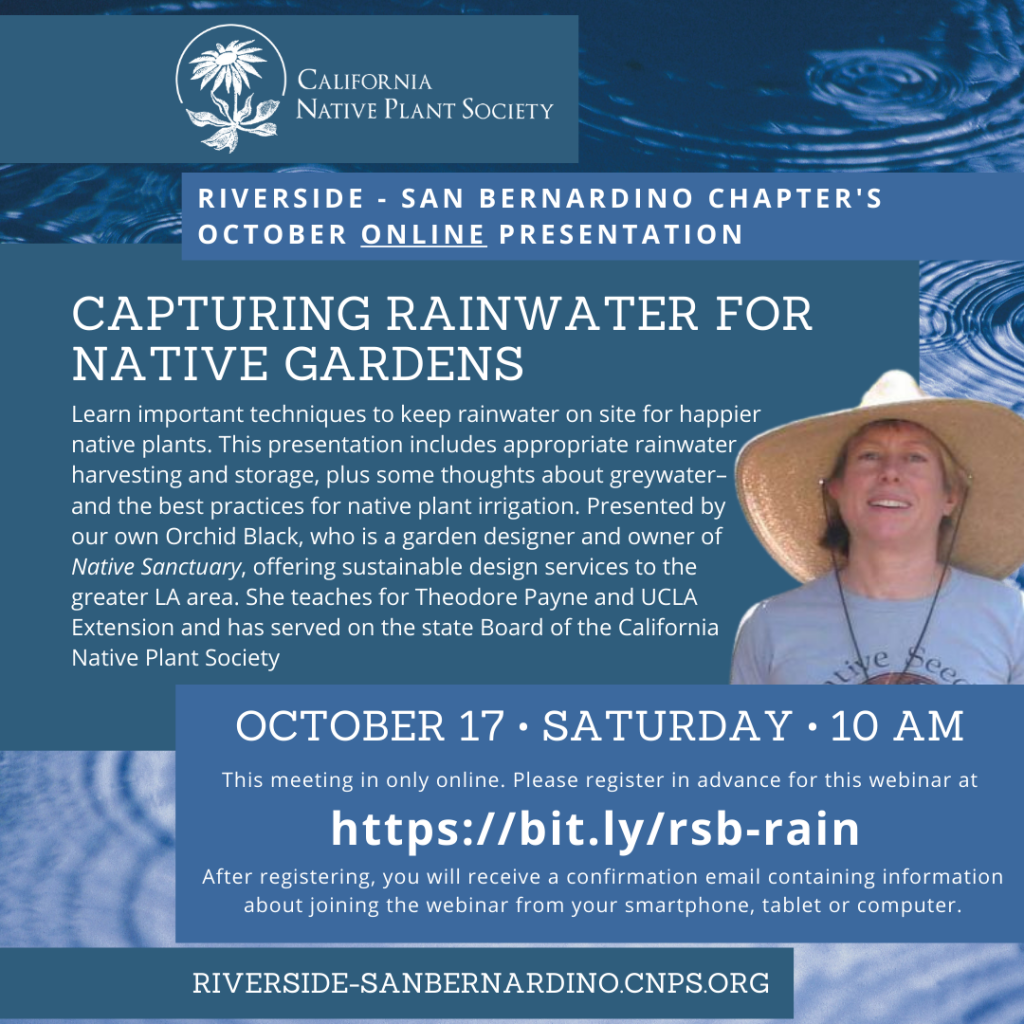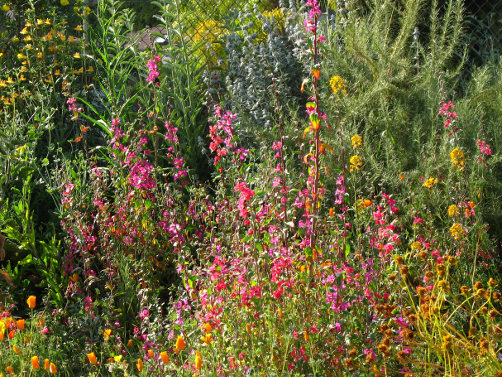
I am reprising my water talk for Sierra Madre on Friday, April 24 at 7:00 pm at City Hall. The next morning, April 25 at 9:30 am, we will be digging some swales at a Sierra Madre residence. The demonstration will only make sense in the light of the talk the night before, so please come to both!
Returning Rain to the Aquifer Beneath Us: Simple Water Infiltration for Sierra Madre
We do get rain in Sierra Madre, and when it comes, we throw most of it into the storm drain. Our wells are running dry, so we’re drinking imported water. Meanwhile, the cost of cleaning up pollution in stormwater is projected to cost the County $120 billion (SGV Tribune), which will be passed onto cities. “It will be millions and millions of dollars for each city…” (Monrovia Mayor Lutz, chairwoman of SGVCoG’s water committee.”
We can do better. This program will show simple ways to detain water on site and infiltrate it back in to the aquifer. Orchid will show examples of swales, earthworks, cisterns and other rainwater harvesting methods that can be used to store water on site, creating a better environment for plants to grow and helping to re-fill our aquifer and our wells.
Talk Location City Hall, Council Chambers
232 W. Sierra Madre Blvd.
Friday, April 24, 7:00 pm
Contact 626-355-7135
Demonstration Location
285 W. Grandview Ave.
Saturday, April 25, 9:30 am




